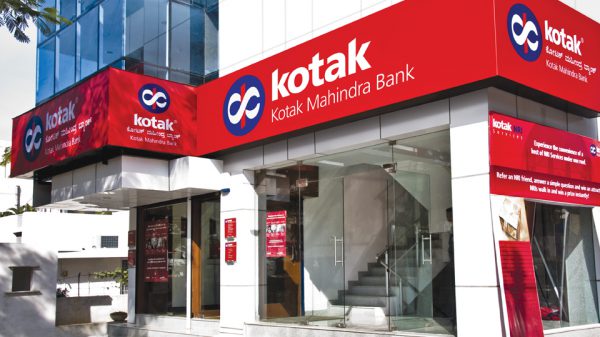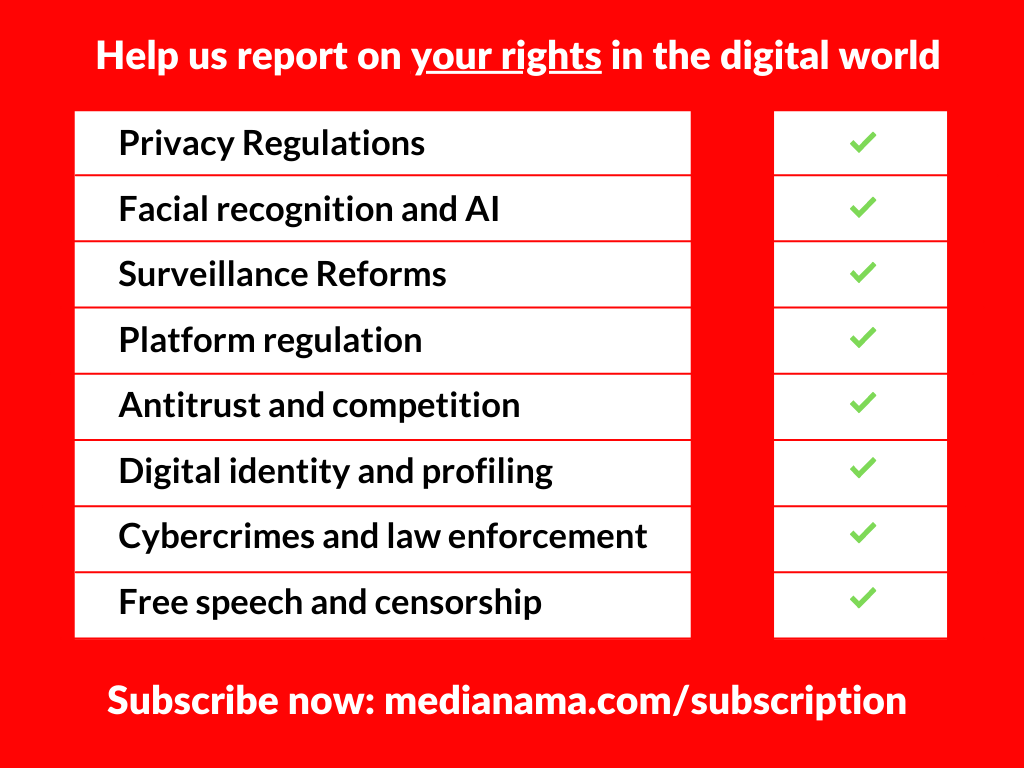A Crypto-Asset Reporting Framework (CARF) has been designed by the Organisation for Economic Co-operation and Development (OECD) to ensure the collection and exchange of information on transactions in Crypto-Assets. A consultation paper on the same was released in March this year.
The OECD believes that the crypto-asset market poses a significant risk that threatens to erode the gains in global tax transparency. They also said that crypto-asset intermediaries are not subjected to tax reporting requirements.
The OECD wrote in its consultation draft that once the framework is approved, it can be “transposed” into domestic law by member countries in order to collect from resident crypto intermediaries.
It then plans to urge countries to sign bilateral or multilateral authority agreements or arrangements for the automatic exchange of information collected under the CARF, as per the document reviewed by MediaNama.
The OECD is one of the most prominent international bodies in the world comprising more than 35 high-income nations that advises on crucial economic policy matters. The fact that OECD is looking to come up with a framework to implement a tax regime for crypto assets signals that crypto assets are likely to become mainstream soon.
Dear reader, we urgently need to build capacity to cover the fast-moving tech policy space. For that, our independent newsroom is counting on you. Subscribe to MediaNama today, and help us report on the policies that govern the internet.
What does the framework consist of?
Scope of crypto assets to be covered
“The term ‘Crypto-Asset’ means a digital representation of value that relies on a cryptographically secured distributed ledger or a similar technology to validate and secure transactions,” as defined in the paper.
The OECD explained that the proposed definition of crypto assets under the CARF “focuses on the use of cryptographically-secure distributed ledger technology, as this is a distinguishing factor underpinning the creation, holding and transferability of Crypto-Assets”.
The consultation paper included a reference to “similar technology” to ensure countries can include new asset classes that emerge in the future and that operate in a functionally similar manner to crypto assets.
The definition has been designed to fall within the scope of the FATF Recommendations, to ensure intermediaries’ due diligence requirements can build on existing AML/KYC obligations.
Which categories are excluded from the scope?
The paper said that crypto intermediaries can exclude the following categories from reporting requirements as they pose limited tax compliance risks:
- Closed Loop Crypto-Assets: Gaming tokens, loyalty points, etc.
- Central Bank Digital Currencies: e-CNY, Sand dollar, e-krona, etc.
Intermediaries in scope of CARF
CARF has proposed that intermediaries that which provide services “effectuating exchange transactions in relevant crypto assets, for or on behalf of customers, would be covered under the CARF. They will be called “Reporting Crypto-Asset Service Providers”.
The paper wrote that these intermediaries are expected to have the “best and most comprehensive access” to the value of the crypto assets and the exchange transactions. They also fall within the scope of “obliged entities” for FATF purposes (i.e. virtual asset service providers).
The definition under CARF would cover not only exchanges but also other intermediaries providing exchange services such as brokers and dealers in crypto assets and operators of crypto-asset ATMs. The CARF would also be applicable to decentralised exchanges and decentralised finance. (DeFi can be understood as an emerging financial technology based on secure distributed ledgers which removes control banks and institutions have on financial products and services.)
What are the reporting requirements?
The consultation paper has laid down four types of transactions that would be reportable under the CARF:
- Exchanges between crypto assets and fiat currencies;
- Exchanges between one or more forms of crypto assets;
- Reportable retail payment transactions;
- Transfers of crypto assets.
The paper elaborated that transactions will be reported on an aggregate basis by type of crypto asset; intermediaries will have to capture incoming and outgoing transactions.
The reporting on exchange transactions is to be distinguished between crypto-to-crypto and crypto asset-to-fiat transactions in order to make data accessible for tax administrations.
- The CARF also stipulated that for crypto asset-to-fiat transactions, the fiat amount paid or received is reported as the acquisition amount or gross proceeds.
- It proposed that the value of the crypto asset (at acquisition) and the gross proceeds (upon disposal) must be reported in fiat currency for crypto-to-crypto transactions.
- Such transactions would be split into two reportable elements:
- A disposal of crypto asset A (the reportable gross proceeds based on the market value at the time of disposal);
- An acquisition of crypto asset B (the reportable acquisition value based on the market value at the time of acquisition).
- Such transactions would be split into two reportable elements:
The CARF has allowed tax authorities to opt-in to receive reporting on the list of external wallet addresses to which intermediaries transfer crypto assets on behalf of their users as such information about taxpayers’ holdings are relevant to tax authorities.
The CARF would be applied to certain instances where an intermediary processes payments on behalf of a merchant accepting crypto assets in payment for goods or services (i.e. Reportable Retail Payment Transactions).
“In such instances, the Reporting Crypto-Asset Service Provider is required to also treat the customer of the merchant as its customer, and report with respect to the value of the transaction on that basis,” read the paper.
What information will need to be reported?
- Name,
- Address,
- Jurisdiction(s) of residence,
- TIN(s)
- Date and place of birth of each user
What are the details that will need to be furnished for crypto-asset transactions?
The paper has asked intermediaries to report the following information:
- Full name of the type of Relevant Crypto-Asset;
- Aggregate gross amount paid, the aggregate number of units and the number of Relevant Transactions in respect of acquisitions against fiat currency;
- Aggregate gross amount received, the aggregate number of units and the number of Relevant Transactions in respect of disposals against fiat currency;
- Aggregate fair market value, the aggregate number of units and the number of Relevant Transactions in respect of acquisitions against other Relevant Crypto-Assets;
- Aggregate fair market value, the aggregate number of units and the number of Relevant Transactions in respect of disposals against other Relevant Crypto-Assets;
- Aggregate fair market value, the aggregate number of units and the number of Reportable Retail Payment Transactions;
- Aggregate fair market value, the aggregate number of units and the number of Relevant Transactions, and subdivided by transfer type where known by the Reporting Crypto-Asset Service Provider,
- Aggregate fair market value, the aggregate number of units and the number of Relevant Transactions, and subdivided by transfer type where known by the Reporting Crypto-Asset Service Provider
- Wallet addresses to which the service intermediaries have transferred crypto assets on account of their user. They must not be associated with any intermediaries.
Due diligence procedures
The CARF has laid down due diligence procedures to be followed by all service providers in:
- identifying their users,
- determining relevant tax jurisdictions for reporting purposes,
- and collecting relevant information needed to comply with the reporting requirements under the CARF.
The due diligence requirements allow intermediaries to “efficiently and reliably determine the identity and tax residence of their Individual and Entity Crypto-Asset Users, as well as of the natural persons controlling certain Entity Crypto-Asset Users”, according to the paper.
These procedures have been drafted keeping in mind the self-certification-based process of the Common Reporting Standard as well as existing AML/KYC obligations enshrined in the 2012 FATF Recommendations, which include the June 2019 obligations applicable to virtual asset service providers.
Here are some of the proposed procedures for individual users of crypto assets:
- Obtain self-certification: The service provider must obtain a self-certification that allows it to “determine the crypto-asset user’s residence for tax purposes” and “confirm the reasonableness of such self-certification” based on the information obtained by them, including documentation collected pursuant to AML/KYC procedures.
- Procure reasonable explanation: Crypto service providers are expected to procure “a valid self-certification, or a reasonable explanation and documentation supporting the validity of the original self-certification” if there is reason to believe that a user’s original self-certification is incorrect or unreliable.
The procedures for entity crypto-asset users mimic the one for individual users insofar as furnishing a self-certification is concerned to establish residence of the entity. The service provider has also been asked to determine whether the entity has one or more controlling persons. They can rely on information collected and maintained under AML/KYC procedures.
What are the requirements for validity of self-certification?
A self-certification is valid only if it is “signed or otherwise positively affirmed” by the user and should contain the information:
- First and last name;
- Residence address;
- Jurisdiction(s) of residence for tax purposes;
- TIN with respect to each Reportable Jurisdiction; and
- Date of birth.
The lack of self-certification will result in the service provider refusing to carry out transactions on behalf of the user.
What are some of the definitions laid down in the consultation paper?
The paper has elaborated on definitions of the following terms:
- The term “Relevant Crypto-Asset” means any crypto-asset that is not a Closed-Loop Crypto-Asset or a Central Bank Digital Currency.
- The term “Closed-Loop Crypto-Asset” means a crypto-asset that:
- is issued as a means of payment with Participating Merchants for the purchase of goods or services;
- can only be transferred by or to the issuer or a Participating Merchant; and
- can only be redeemed for Fiat Currency by a Participating Merchant redeeming with the issuer.
- The term “Central Bank Digital Currency” means any digital Fiat Currency issued by a Central Bank.
- The term “Reporting Crypto-Asset Service Provider” means any individual or Entity that, as a business, provides a service effectuating Exchange Transactions for or on behalf of customers, including by acting as a counterparty, or as an intermediary, to such Exchange Transactions, or by making available a trading platform.
- The term “Relevant Transaction” means any:
- Exchange Transaction;
- Reportable Retail Payment Transaction;
- Other Transfer of Relevant Crypto-Assets.
- The term “Reportable Retail Payment Transaction” means a Transfer of Relevant Crypto-Assets in consideration of goods or services [for a value exceeding USD xxx]. coins or by money in different digital forms, including bank reserves, commercial bank money, electronic money products and Central Bank Digital Currencies.
- The term “Crypto-Asset User” means an individual or Entity that is a customer of a Reporting Crypto- Asset Service Provider for purposes of carrying out Relevant Transactions.
- The term “TIN” means Taxpayer Identification Number (or functional equivalent in the absence of a Taxpayer Identification Number).
This post is released under a CC-BY-SA 4.0 license. Please feel free to republish on your site, with attribution and a link. Adaptation and rewriting, though allowed, should be true to the original.
Also read:






























